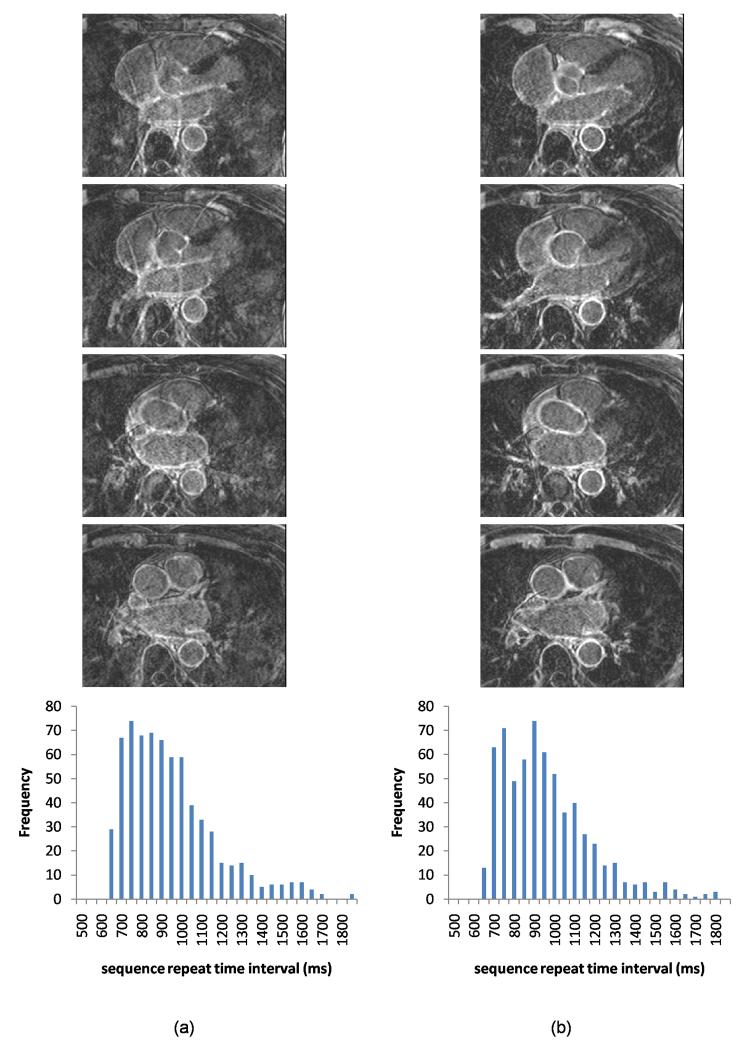Figure 5.
Selected slices from 3D acquisitions in an example patient both without (a) and with (b) dynamic-TI, together with sequence repeat time interval histograms. The dynamic-TI algorithm results in less ghosting in the left-right phase encode direction and improved image quality. The image quality score increased from 2 to 3 with the dynamic-TI algorithm. The window width and level have been set to best demonstrate the artefact levels in the images. The repeat time intervals were similar in the acquisitions with and without dynamic-TI (standard deviation as a percentage of the mean 25.1% and 24.8% respectively).

